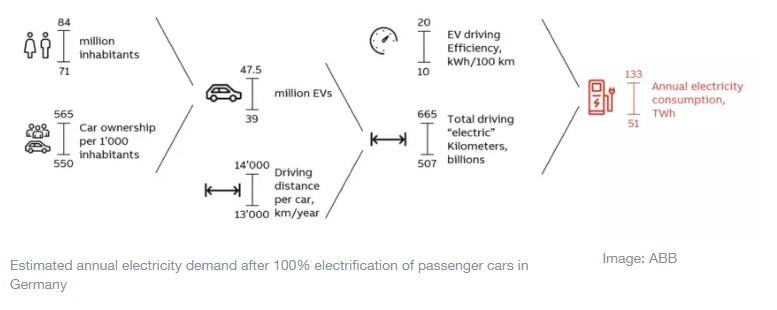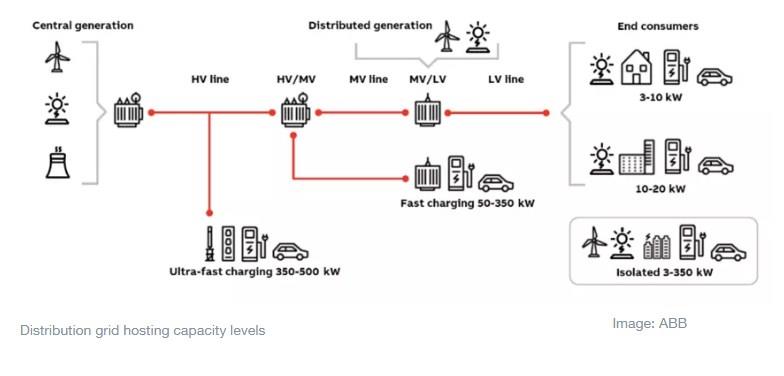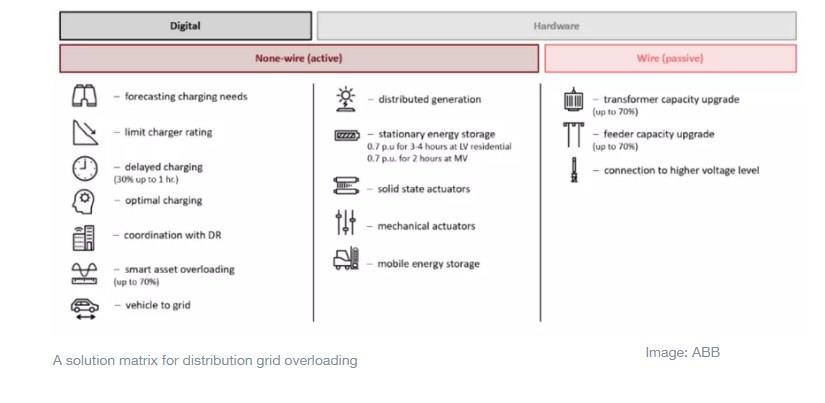by Gerhard Salge and Alexandre Oudalov*
Road transportation, which is responsible for around 18% of global CO2 emissions, is a critical sector in which emissions reductions must be made. A switch from fossil hydrocarbon to renewable energy-fuelled transportation is key to limiting global temperature rises, and governments across the world have been setting targets and supporting schemes to accelerate the electrification of transport. Some have already introduced a ban for new petrol and diesel cars by 2030-2040.
Running vehicles on electricity from renewable sources instead of fossil fuels will shift energy requirements from petrol stations to power systems. We need to consider the impact of an increasing number of vehicles going electric and regularly plugging in to refill their batteries.
What are the limits in terms of capacity and flexibility of generation and grid assets in handling growing e-mobility charging demand without any special technical or market-based measures, such as uncontrolled charging? When will the limits be reached, and what kind of software and hardware-based solutions can be deployed to accommodate higher proportions of electric vehicles (EV)?
To play out future regional scenarios, we have applied the following generalized modelling approach to personal (passenger) cars as shown in the figure below. Based on these assumptions, complete electrification of passenger cars in any region of the world is likely to increase its total electricity demand by around 10-20%.

In our analysis we used public sources to collect and investigate typical driving behaviour data for the US, Australia and some EU countries, and we observed similar trends across regions. The driving profiles have been translated into EV-charging profiles, taking into account the typical power rating of chargers, charging location and charging frequency. In the modelling approach, we consider that all EVs start recharging their batteries immediately when they are parked and plugged-in to the electric grid; that is, a charging process that is uncontrolled from the grid-management prospective. So what did we find?
Challenges at a national level
On a national level, new EV demand spikes in the morning and evening, in combination with retirements of traditional generating capacity, can cause power generation and transmission inadequacy in certain hours and days, for example on cloudy winter days with low wind production. The ability of countries to keep generation and demand balanced will depend on the capacity of their future cross-border interconnections with neighbouring countries. The spatial distribution of EVs, differing driving habits, and variable renewable energy production are important in quantifying these needs. In the case of Germany in 2040, more than 80% of the power deficit on specific days can be covered by renewable generation from the UK, but the transmission network capacity in North Western Europe would need to be expanded based on today’s level.
During days with high solar generation, the loss of sunlight together with the peak demand in the evening due to the increasing number of EVs could challenge the characteristics of traditional thermal power plants in coming years. Energy storage will play a key role in harnessing the surplus of solar PV generation during sunny hours to store energy and discharge it during the evening peaks of EV charging, smoothing the output of traditional power plants.
Challenges at the distribution level
While power plants and cross-border connections may have enough capacity, it could become challenging when it comes to distributing power to individual areas (see figure below) as personal EV penetration levels will be uneven. In fact, some areas already see high EV shares today, long before the same levels will be reached at a national level.

When considering a 100% EV market scenario in a specific neighbourhood, distribution cables and transformers might experience significant overloading, specifically in the evening. This occurs too late in the day to be mitigated by local solar PV production. The voltages may also hit the minimum acceptable levels during demand spikes caused by EV charging, which will be problematic in distribution grids that do not have voltage control devices.
A solution matrix for countering the voltage and thermal overloading problems resulting from uncontrolled EV charging is depicted in the figure below. It includes various digital technologies and smart devices needed to be optimally sized and placed both in the field and in control rooms for a successful transition towards the full electrification and decarbonization of road transport.

Distribution transformer overloading from personal EVs could be reduced by strategically delaying EV charging until the early hours of the morning. Only 20-25% of the total EV energy demand would need to be re-distributed through delayed charging.
Battery storage can be used to shave EV charging peaks and defer major infrastructure investments. The respective battery needs for a typical distribution grid are in the range of 50-75% of transformer power rating with two to four hours of discharge time.
Flexible voltage and power flow control devices embedded at strategic locations in distribution grids can enable optimal utilization of available transformer and feeder capacity and will improve the overall quality of power supply in distribution grids.
We believe that from a technical perspective, the complete toolbox of technical solutions required to achieve 100% electrification of road transport, without threatening the secure operation of existing and future power systems, is available or under development and will not be a constraint or stumbling block.
*Chief Technology Officer, Hitachi ABB Power Grids Ltd and Manager, Power Systems of the Future, Hitachi ABB Power Grids Ltd
**first published in: www.weforum.org




 By: N. Peter Kramer
By: N. Peter Kramer

